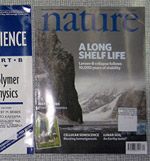Delimiting the boundaries of a species invasion (with no prior info)
 Invasive
Invasive When it comes to successfully controlling invasive species, managers face the critically important step of figuring out the extent of the invasion.
Yet this task can be very difficult and the searching involved can be extremely time-consuming. Information is often lacking about where and when the species invaded and how it spreads. This is particularly true early in the invasion timeline when control efforts are most likely to find success.
To help with this effort, Brian Leung from McGill University and fellow researchers have developed and tested an innovative approach in a new study in the journal Diversity and Distributions. The method involves estimating the limit of the invasion based on the rate of decline in the density of species occurrence as you move outwards towards the boundary.
The approach could be particularly beneficial because it requires almost no pre-existing knowledge about the species. The researchers developed the method with the goal of being able to quickly delimit the boundarieas with high level of accuracy.
Control efforts often involve working from the edges to prevent further outward spread. If a resource manager underestimates the boundary it could lead to disastrous results as money is spent in vain on control efforts while the invading front advances onward.
For this reason managers might be tempted to be very conservative in figuring out the invasion edge. However, this can lead to prolonged searches and an overestimating of the boundary, which can waste both time and effort.
Overall, this topic has received little research attention. The authors write,
"We know of few attempts to develop theory for delimitation, despite its obvious relevance. The work presented here, therefore, represents an early attempt to generate useful ideas for delimitation, given a general lack of data that characterize most invasions."
The researchers term their method: Approach, Decline, and Delimit (ADD), which involves the following steps:
1) Approach - Move in the direction towards the boundaries. An algorithm is used to expedite the process of moving close to the boundaries.
2) Decline - While moving out towards the edge of the invasion, measure the decline in density of occurrences.
3) Delimit - Use the rate of decline to delimit the boundary of the invasion.
While the approach is intriguing, the question remains whether it will actually work in the field. The researchers tested the approach on 4000 simulated invasions and found it to be applicable and highly accurate in most but not all scenarios. However, a computer simulation likely does not capture the full complexity of a real world setting.
Nevertheless, this study represents an important contribution on an overlooked topic and will hopefully stimulate further research.
--Reviewed by Rob Goldstein
Leung, B., Cacho, O., & Spring, D. (2010). Searching for non-indigenous species: rapidly delimiting the invasion boundary Diversity and Distributions DOI: 10.1111/j.1472-4642.2010.00653.x




Reader Comments